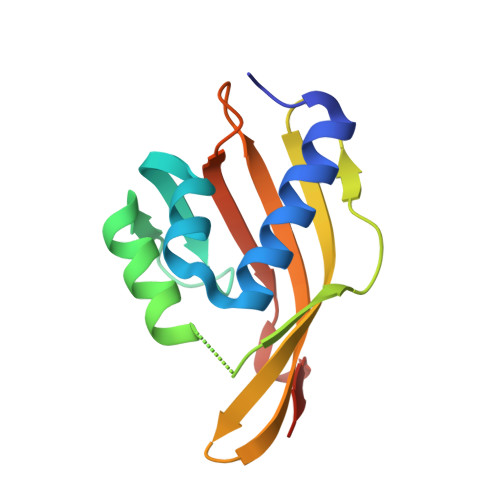Testing Electrostatic complementarity in Enzyme Catalysis: Hydrogen Bonding in the Ketosteroid Isomerase Oxyanion Hole
Kraut, D.A., Sigala, P.A., Pybus, B., Liu, C.W., Ringe, D., Petsko, G.A., Herschlag, D.(2006) PLoS Biol 4: 501-519
- PubMed: 16602823
- DOI: https://doi.org/10.1371/journal.pbio.0040099
- Primary Citation of Related Structures:
2PZV - PubMed Abstract:
A longstanding proposal in enzymology is that enzymes are electrostatically and geometrically complementary to the transition states of the reactions they catalyze and that this complementarity contributes to catalysis. Experimental evaluation of this contribution, however, has been difficult. We have systematically dissected the potential contribution to catalysis from electrostatic complementarity in ketosteroid isomerase. Phenolates, analogs of the transition state and reaction intermediate, bind and accept two hydrogen bonds in an active site oxyanion hole. The binding of substituted phenolates of constant molecular shape but increasing pK(a) models the charge accumulation in the oxyanion hole during the enzymatic reaction. As charge localization increases, the NMR chemical shifts of protons involved in oxyanion hole hydrogen bonds increase by 0.50-0.76 ppm/pK(a) unit, suggesting a bond shortening of 0.02 A/pK(a) unit. Nevertheless, there is little change in binding affinity across a series of substituted phenolates (DeltaDeltaG = -0.2 kcal/mol/pK(a) unit). The small effect of increased charge localization on affinity occurs despite the shortening of the hydrogen bonds and a large favorable change in binding enthalpy (DeltaDeltaH = -2.0 kcal/mol/pK(a) unit). This shallow dependence of binding affinity suggests that electrostatic complementarity in the oxyanion hole makes at most a modest contribution to catalysis of 300-fold. We propose that geometrical complementarity between the oxyanion hole hydrogen-bond donors and the transition state oxyanion provides a significant catalytic contribution, and suggest that KSI, like other enzymes, achieves its catalytic prowess through a combination of modest contributions from several mechanisms rather than from a single dominant contribution.
Organizational Affiliation:
Department of Biochemistry, Stanford University, Stanford, California, United States of America.















